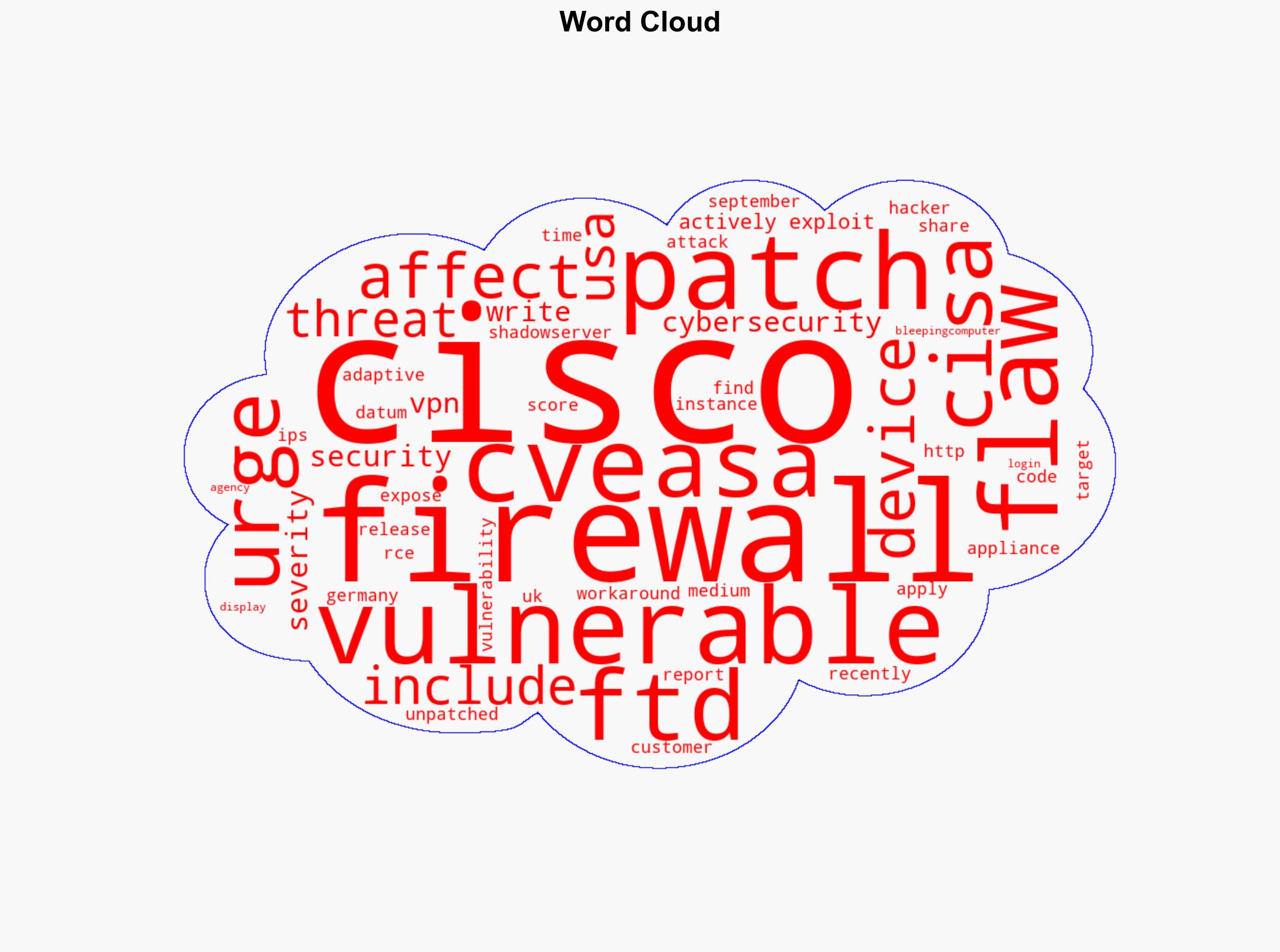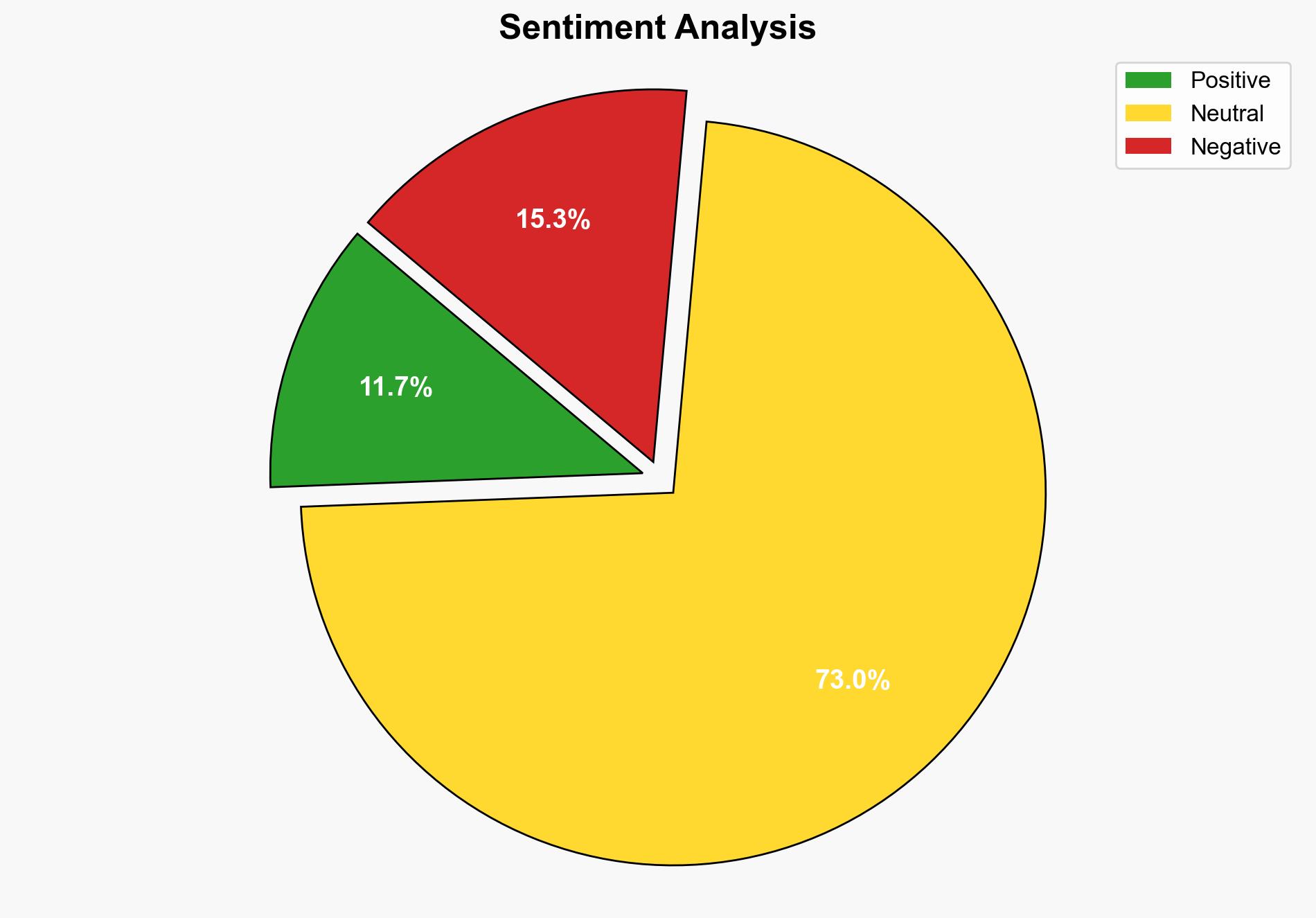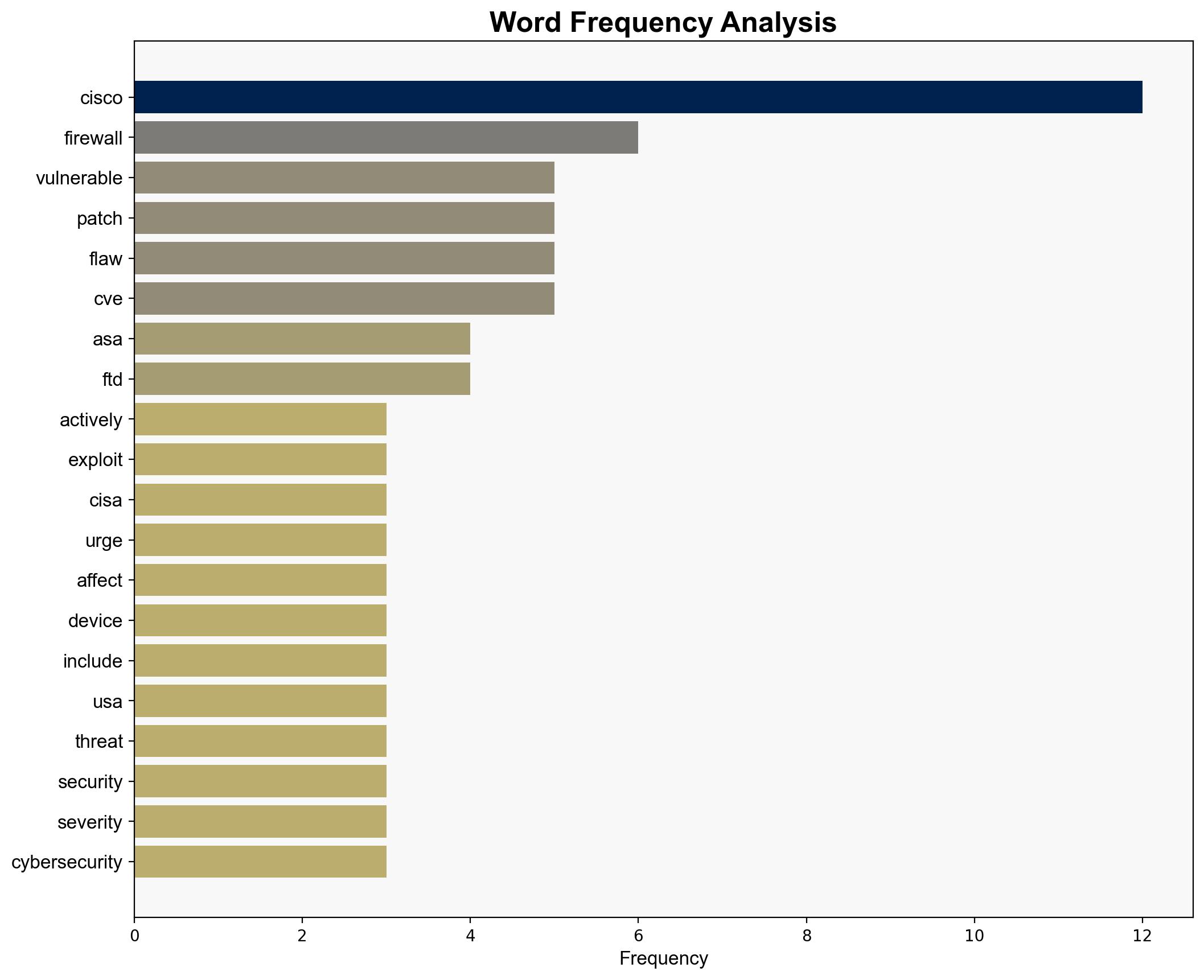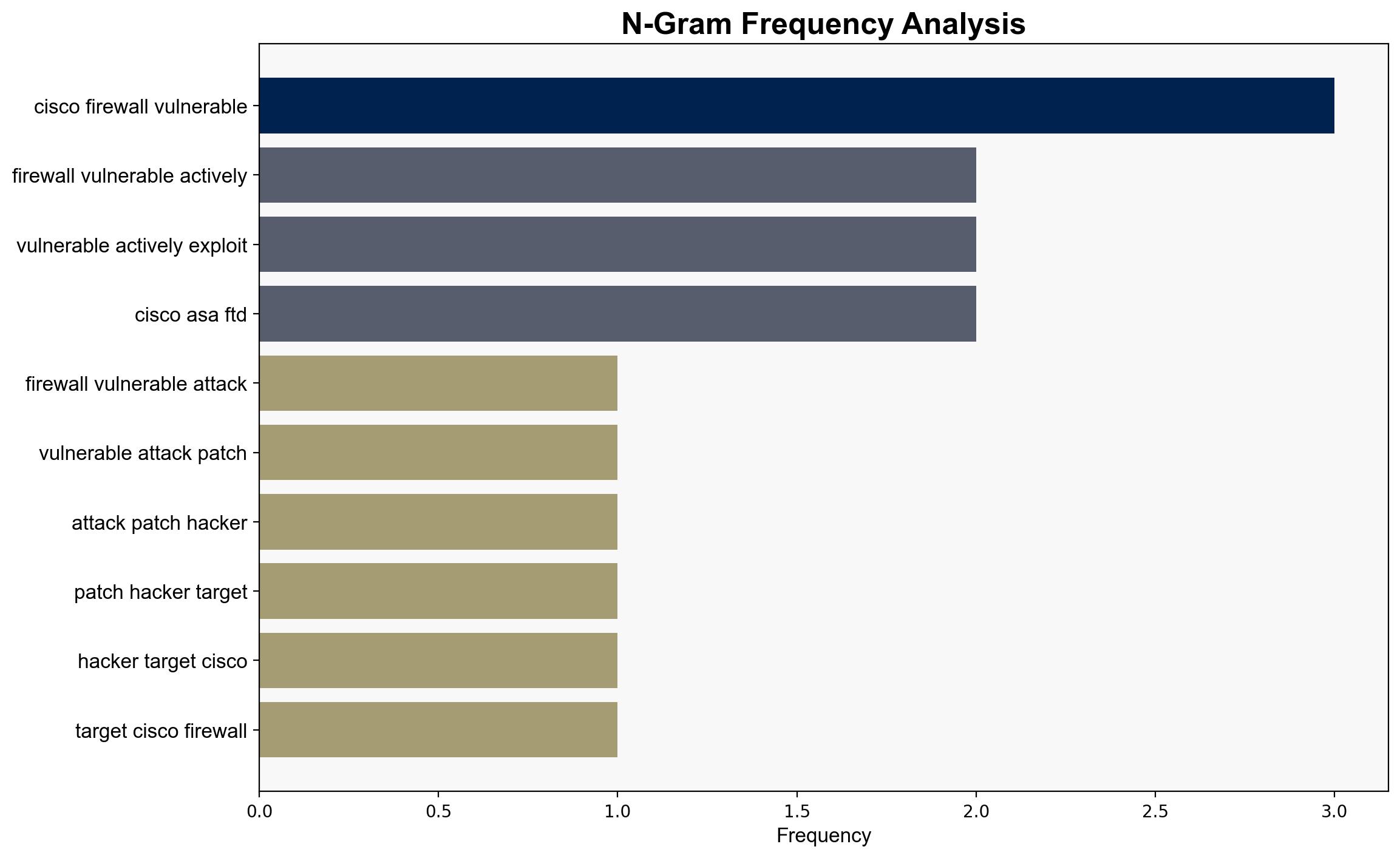Around 50000 Cisco firewalls are vulnerable to attack so patch now – TechRadar
Published on: 2025-10-01
Intelligence Report: Around 50000 Cisco firewalls are vulnerable to attack so patch now – TechRadar
1. BLUF (Bottom Line Up Front)
The most supported hypothesis is that a significant number of Cisco firewalls are currently vulnerable to exploitation due to unpatched Remote Code Execution (RCE) flaws. This vulnerability is actively being exploited, posing a critical risk to national and organizational cybersecurity. The recommended action is to prioritize patching these systems immediately to mitigate potential breaches. Confidence level: High.
2. Competing Hypotheses
1. **Hypothesis A**: The vulnerability in Cisco firewalls is being actively exploited by threat actors, leading to potential widespread breaches if not addressed promptly. This hypothesis is supported by reports of active exploitation and advisories from Cisco and CISA urging immediate patching.
2. **Hypothesis B**: The vulnerability is not as widely exploited as reported, and the urgency is overstated due to misinterpretation of threat data or overestimation of the threat actors’ capabilities. This hypothesis considers the possibility of overreaction based on limited or misinterpreted data.
3. Key Assumptions and Red Flags
– **Assumptions**:
– Hypothesis A assumes that the reported exploitation attempts are accurate and representative of a larger trend.
– Hypothesis B assumes that the data on exploitation is either incomplete or exaggerated.
– **Red Flags**:
– Lack of specific data on the number of successful exploitations.
– Potential bias in reporting due to reliance on cybersecurity advisories and nonprofit data without independent verification.
– Absence of detailed information on the nature and origin of the threat actors.
4. Implications and Strategic Risks
– **Cybersecurity**: Unpatched vulnerabilities could lead to unauthorized access, data breaches, and control over critical infrastructure.
– **Economic**: Potential financial losses due to data theft, system downtime, and recovery efforts.
– **Geopolitical**: Exploitation of these vulnerabilities could be leveraged by state-sponsored actors to gain strategic advantages.
– **Psychological**: Increased fear and uncertainty among organizations relying on Cisco products, potentially leading to loss of trust in vendor security assurances.
5. Recommendations and Outlook
- **Immediate Action**: Organizations using Cisco firewalls should apply the latest patches and follow recommended hardening steps, such as restricting VPN web interface exposure and increasing log monitoring.
- **Scenario Projections**:
– **Best Case**: Rapid patch deployment mitigates the threat, and no significant breaches occur.
– **Worst Case**: Delays in patching lead to widespread exploitation and significant data breaches.
– **Most Likely**: A moderate number of exploitations occur, but timely patching prevents major incidents.
6. Key Individuals and Entities
– Cisco Systems
– Shadowserver Foundation
– Cybersecurity and Infrastructure Security Agency (CISA)
– Sead, a journalist based in Sarajevo, Bosnia and Herzegovina
7. Thematic Tags
national security threats, cybersecurity, counter-terrorism, regional focus





